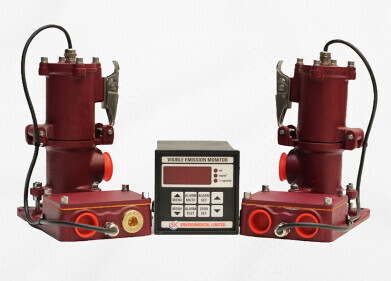Air Monitoring
What Is Classed as Unhealthy Air Quality?
May 27 2022
Air pollution claims the lives of seven million people prematurely each year. Indeed, advances in urban air quality monitoring have led the World Health Organisation (WHO) to believe that contaminated airways are so commonplace that over 90% of the planet’s population are exposed to them on a daily basis! But what, exactly, constitutes unhealthy air quality?
The exact method of monitoring, assimilating and quantifying air quality levels differs around the world, depending on the mechanics of the Air Quality Index (AQI) system that a given government has in place. However, the USA has one of the first and most effective AQIs in the world, which is why it makes sense to use their framework as a general rule of thumb. For more information on air quality monitoring in other parts of the world, the Air Quality Emissions (AQE) Show in October is a great opportunity to learn about this fascinating subject.
What does the US define as “unhealthy” air quality?
The Environmental Protection Agency (EPA) in America relies upon sophisticated satellite imaging data and ground-level sensors to create a comprehensive picture of air pollution across the country. In order to allow its citizens to see, at a glance, just how contaminated the atmosphere is in their part of the States, the information is presented in a colour-coded system comprised of six levels.
The first two levels – “Good” and “Moderate” air quality – account for values of between 0 and 50 and 51 and 100, respectively. The next category is labelled “Unhealthy for Sensitive Groups” and is colour-coded orange, accounting for a range between 101 and 150. Meanwhile, the red category, known as “Unhealthy”, comprises values of between 151 and 200, while values between 201 and 300 are coloured purple and deemed “Very Unhealthy”. These values are arrived at by quantifying concentrations of five pollutants (particulate matter, nitrogen dioxide, sulphur dioxide, carbon monoxide and ozone). If more than one contaminant is present, the higher concentration is used to determine the classification.
What does these assignations mean?
As the names suggest, the three categories all denote varying levels of pollution that could incur negative impacts on the health of those exposed to them. By “Unhealthy for Sensitive Groups”, the US government is warning that elderly people, young children and those suffering from pre-existing health complications (especially those which are centralised in the lungs and heart) could be at risk of exacerbating their conditions if they venture into such zones.
Meanwhile, the “Unhealthy” and “Very Unhealthy” levels are more broadly applicable to the general population. In milder cases, exposure to these types of pollution could result in coughing, nausea and irritation of the throat, nose and eyes. In more severe cases, it could cause difficulties in breathing, faintness and loss of consciousness. There is evidence to suggest that prolonged exposure to poor air quality can lead to the development of serious diseases and, in the most extreme scenario, even result in death.
Digital Edition
IET 34.2 March 2024
April 2024
Gas Detection - Biogas batch fermentation system for laboratory use with automatic gas analysis in real time Water/Wastewater - Upcycling sensors for sustainable nature management - Prist...
View all digital editions
Events
May 03 2024 Seoul, South Korea
May 05 2024 Seville, Spain
May 06 2024 Minneapolis, MN, USA
May 13 2024 Munich, Germany
May 15 2024 Lund, Sweden


















